Discussion
審査講評(7)
Comments on Jurors’ Special Prizes winners
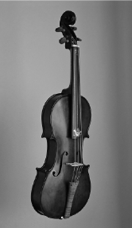
大西 長利 賞
漆ヴァイオリン
Urushi Varnished Violin
H10×W21×D60
2016
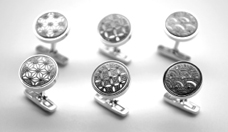
川上 元美 賞
蒔絵カフス
Makie Cuff Links
H2.1×W1.5×D1.5
2017
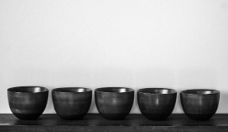
山村 真一 賞
磁胎漆器カップ
Jitai Lacquer Ware Cup
H6.5×W9×D9
2017

山田 節子 賞
ストロマトライト
Stromatolite
H30×W90×D22
2015
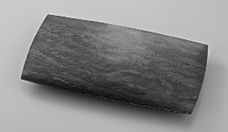
内野 薫 賞
波濤盤
Hatouban
H4×W30×D30
2017
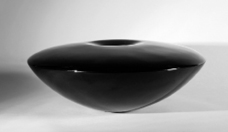
田中 信行 賞
変化-8
Wandel-8 (Transition-8)
H14.4×W40.2×D40.2
2016
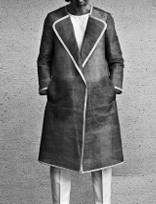
山村 慎哉 賞
Urushi Mode
H104×W64×D20
2015
Ohnishi ───── Thank you for your comments, that completes all the Honorable Mentions. We would now like to move on to the Jurors’ Special Prizes.
First, I would like to talk about the Nagatoshi Ohnishi Prize winner. I selected ‘Urushi Varnished Violin’ by Ms Chiaki Asakawa living in Tokyo. Everybody is familiar with the violin, and this year we have two entries of this instrument so it is interesting to compare the two.
Ms Asakawa is from Hokkaido and she has been interested in the wooden materials used to make a violin. I had previously advised her while she was working on violin making. She loves music and she is particularly interested in the violin. The sound of the violin is important, so a coating of Urushi is not necessarily good for the violin. This particular point is significant, this is a violin to be displayed.
She chose a style of violin, took accurate measurements, sculpted cherry wood into each part, and fastened them with vegetable glue. She has carefully studied the different materials for violin-making. Usually in Europe, cherry wood is used, however, the delicate shade of the sound depends on the features of cherry trees, developed from their environment, for example a snowy climate. I have met Dr Joseph Nagyvary, a world famous researcher studying the subtle differences of sound from violins of various materials, and heard from him about the world of depth within the sounds. We, at a glance, cannot comprehend the value of a violin. Without considering such complicated matters, Ms Asakawa is eager and passionate to continue making violins.
She is an Urushi artist. She tries to express the texture of Urushi and at the same time tries to make a good sound from the violin through deep study. Ms Asakawa’s work is based on the fundamentals of Urushi and she applies Raden (mother-of-pearl) and Makie as inlay. In the Shosoin Treasure House, a famous Biwa musical instrument is coated with Urushi and decorated with Raden and metal inlay. The theme of this work is a interesting world of sound through Urushi, one of many joyful aspects of musical instruments. I recommend this work, hoping that such Urushi artists will increase in number.
Next, ‘Makie Cuff Links’ will receive comments from Mr Motomi Kawakami.
Kawakami ───── Near Shibayama-gata lagoon in Kaga City, the Nakaya Ukichiro Yuki-no Kagakukan was built in memory of Dr Ukichiro Nakaya, a researcher on snow whose phrase “snow is a letter sent from the sky” is world famous. The museum holds a snow and ice design competition, which I have been involved with for a long time as a juror. Several years ago I came across small objects or accessories created using Makie, which would be the prototype of this work.
It is impressive how traditional Urushi art techniques, such as Hira Makie, Nashiji Makie, Raden (mother-of-pearl inlay), and metal inlay can create a microcosm within our modern everyday items. Some time ago, at a fashion and handicraft fair in Tokyo, I happened to find this artist’s works. I admired his determined effort to pursue the possibilities of Urushi lacquer in a new field.
And now in this competition, I came across these formal cuff links.
The work has reached a high degree of perfection and they would make perfect gifts. The work is splendidly finished with a modern edge.
As time passes and fashions change, the artist pursues new markets for his work. Although he will continue pursue his goal, to me, this work is an example of his final destination. His techniques have been developed and refined, and this is why I decided to give the Motomi Kawakami Prize to his work.
Ohnishi ───── Thank you. Next, we would like Mr Shinichi Yamamura to comment on the Shinichi Yamamura Prize winner ‘Jitai Lacquer Ware Cup’.
Shinichi Yamamura ───── In this competition, two works of Jitai (Toutai) Urushi ware were submitted.
One is a work by a Chinese artist and the other is this work by Mr Takayuki Tomita.
Toutai Urushi ware once blossomed with the patronage of the shogun Tokugawa Yoshimune (1684-1751). In recent times, Toutai Urushi has been used for tea utensils in the Mino area and in Nagoya.
Mr Tomita’s work is a set of five tea cups. In the case of Jitai ware, porcelain is fired and coated with Urushi either directly or after being glazed. However, in the case of this work, the firing temperature for the porcelain was deliberately set 200℃ lower than usual, so that the Urushi could be saturated into the surface. I have never seen such a good technique.
Urushi lacquering techniques have been developed and improved, so that even glazed porcelain and overglazed paintings can be coated with Urushi. Both Jitai Urushi ware submissions for this exhibition are well made without covering the surface completely, to show the technique to full advantage.
I am sure that this work was made after careful consideration, as I have heard how easily mistakes can be made in this type of work, especially in applying too much Urushi lacquer.
This work, however, reveals the porcelain base little by little and its interior is coated with Urushi. Naturally when you hold this in your hand you will feel the weight of the porcelain base compared to a wooden tea cup. I can imagine relaxing by drinking tea or sake from this cup which would make it taste even better. The rim of the cup is thin and refined, so that the cup is simple to use.
I hope you will visit the exhibition to see this set of tea cups and enjoy the particular appeal of Jitai Urushi ware. This work allows you to imagine the various materials around you decorated with Urushi and envision a new world filled with lacquer.
Ohnishi ───── Thank you. Next, we would like Ms Setsuko Yamada to comment on the Setsuko Yamada Prize winner.
Yamada ───── This work is made by a lady in her twenties. The title ‘Stromatolite’ is quite a difficult word. It means the mysterious patterns at the bottom of the sea created from the sedimentation of photosynthesizing bacteria and algae, as I have learned. Ms Midori Saito has explored this unknown world of mysterious patterns by making the most of the characteristic shrinkage of Urushi. The moment I saw this work, I was impressed with her free expression and future possibilities, and I recalled a story Kado Isaburo once told me.
Bernard Leach was invited to Japan in order to promote Japanese arts and crafts after the Second World War. At the beginning of the 1950s he had an opportunity to visit places where Urushi ware, ceramics and arts and crafts were produced. At that time Kado Isaburo guided Bernard Leach around Wajima City. He took him to various Makie artisans as well as several studios where craftsmen worked with a variety of Urushi techniques. However, Bernard was not satisfied. While walking, he found a wooden pail for washing ink brushes and said “how beautiful!”, which shocked Kado Isaburo. He realized at that moment that he should discover new possibilities of Urushi art. The result was Kado Isaburo’s famous work consisting of Urushi and sand which was submitted for the Nitten Exhibition. At that time, the jury panel rejected the work, saying it was not Urushi art. Then Kado Isaburo stopped submitting to any exhibitions or competitions and started challenging the traditions of Urushi art with new ideas. He had told this story to me and some young people at a workshop in Kanazawa shortly before he passed away.
Remembering Kado Isaburo’s story, I feel sure that new possibilities for the next era will be explored by Ms Saito, a young female artist. Her work is a challenge to the future which is what these competitions exist for. I am so delighted to find her work and learn about it that I selected this work as the Setsuko Yamada Prize winner. I look forward to her splendid works in the future, wondering what kind of expression will come out. The work will draw your attention in a new way.
I truly enjoyed participating in this Final Assessment, not only because yesterday I and the other jurors enjoyed fresh and delicious sushi. I hope the exhibition will continue to develop successfully.
Ohnishi ───── Thank you for your comments. Next, on the Kaoru Uchino Prize winner, titled ‘Hatouban’ by Mr Yasuo Fujino. The work is created with very fine expression of traditional techniques. Professor Uchino will comment.
Uchino ───── The title ‘Hatouban’ means a platter with wave patterns. This is a rectangular platter of Japanese cypress, a little deeper than usual and finished with Nunokise Honkaji technique. After Uwanuri (surface coating), the surface is polished with charcoal using Douzuri and Makiji techniques, over which waves are drawn. By looking closely you can see the precision. The waves are drawn as beautifully as on Seikaiha Nuri by Shibata Zeshin and Takano Shozan. Those waves are drawn from the front to the back, little by little, taking several days. The crest of the waves are also magnificent, at first I thought each line was raised, but in fact it is drawn in black Urushi.
Industrial titanium powder is applied to the black part and gold powder to the gold part. Recently, thanks to the automobile industry you can get strong and hard metal powders that can be delivered by atomizer. Very fine particles can be sprayed through gas in a precise way to create perfect circles. To put it into the usual measurements for gold and silver powders, fine particles are size 1 to 8 and less fine particles are size 9 to 20. The mixture of the fine powders is not sprinkled but scattered over the surface as if sweeping or scattering charcoal powders. Finally the whole body of the work is thinly coated with Black Rose Urushi for fixing the powders. The color of the powders expressing the waves is silvery platinum. The mixture includes size 1 powders, so that you cannot even see the particles but only beautiful fine lines. The lines look as if drawn with Takano Shozan’s Hikibera technique, but all the lines are drawn by Mr Fujino.
After fixing the powders, how the work is finished, I wonder. The surface is quite solid because it is an alloy of titanium. It is polished by buffing, and usually you can see damage from this in the patterns, but in this case the patterns shine nicely. I hope you will come to the exhibition and look at this work as new Makie art.
The wave patterns themselves are not so new although they are well drawn. If the waves were drawn on a soup bowl or something else, it might be very pretty. Furthermore, this is stronger than ordinary Makie, which is an original feature and proposes ideas of new Makie despite its traditional wave patterns.
Ohnishi ───── Thank you for your comments. Next, on the Nobuyuki Tanaka Prize winner with the philosophical title ‘Wandel-8’ (Transition-8) by Mr Heri Gahbler from Germany. We would like Professor Nobuyuki Tanaka to comment.
Tanaka ───── This exhibition has two categories, Art and Design. I believe that some works submitted for the Art Category should have been submitted for the Design Category. So what can be interpreted as art and what as design is a hidden theme for this exhibition. Among the jurors this particular point was actively discussed. Industrial products with Urushi are simple to understand. Why did I decide to select this work as my juror’s special prize winner? This raises other issues.
Many works submitted to this exhibition are made using Urushi for their formation. Among the artists are quite a few ex-students of mine at the Kanazawa College of Art. Many of their works are excellent but I did not want to recommend some of those works because I did not think it fair. So I chose this work. This work was submitted to the Art Category but it can be interpreted as a work for the Design Category. It is a simple form, a solid of revolution, to use the mathematical term. It is made of Kanshitsu and hollow inside, with a small hole in the center into which you can peek. It is a mysterious work. From an artistic perspective, this work cannot compete with the work by Anish Kapoor, a contemporary artist, whose theme is emptiness and void. However, I am interested in the role Urushi plays in this object.
Considering only the form, the material could be replaced with porcelain. Yet when looking closer, you can feel something spiritual by imagining the time spent by the artist coating it with many layers of Urushi. The very simple form encases a philosophical idea. With the continued layering of Urushi until the work is completed, the artist’s spiritual view of the world can be established. It resembles Japanese people’s belief in Zen. Does this have something to do with the fact that the artist is German? The size of this work is almost the same as that of the Grand Prize winner. If the work is developed as art, the size may be larger, though the artist never thinks of such a thing, I am afraid. The size of this work is perfect considering the balance. It is not so novel but makes us feel the sense of Urushi.
The artist is a little older than I and he has developed his career. He has studied Urushi art in Wajima, which might influence what he makes. I think that this work could be reproduced on an industrial scale which is why I feel that this work could also belong in the Design Category. This could be an object for international interior decoration. If you arrange beautiful red flowers in the center for instance, the image of this work changes significantly. This work holds both artistic and design-oriented perspectives. I am sure such items would be sought after. No one needs mere conventional design with functionality. Table ware can be art depending on the artist’s ideas and relation between the artist and materials. That is why I chose this work.
Ohnishi ───── Thank you. Lastly, Professor Yamamura will comment on the Shinya Yamamura Prize winner, ‘Urushi Mode’ submitted to the Design Category by Ms Duneghen Park.
Shinya Yamamura ───── I feel a little impudent in choosing my prize winner. I specialize in Kashoku (decorative work for Urushi art), and I had seen work with excellent decorative patterns, but instead I chose this work. The artist is in her early 40s from Korea and she lives in Japan now. This is the only entry with Urushi application to fibers. It is conspicuous, in a way.
As you know, Urushi and fibers are quite often used as Kanshitsu. In the case of Kanshitsu, Urushi is applied to linen. If Urushi is applied to silk, it easily infiltrates the fibers which might break. If you look closely, you can see white wrinkles in this work where the Urushi did not infiltrate. According to the artist’s explanation, the antimicrobial and preservative characteristics of Urushi, should be utilized for fibers. She expects the Urushi cloth to be protected from humidity in summer and against insects. A single application of Urushi to the fibers stiffens the cloth. The stiff cloth can be sewn in different ways by making the most of its characteristics.
There are beautiful cloths called Bojagi in Korea made of silk and other materials. I highly rate her idea to combine cloth and Urushi from a Korean viewpoint. The cloth is slightly transparent and the overall silhouette is superb. Please come to the exhibition and take a look at the work.
Ohnishi ───── Thank you. I hope that you all have discovered something unexpected while listening to the jurors’ comments and looking at the prize winners. I am sure that many of you have your own ideas and conceptions, and some of you wanted to know more about the works.
Urushi has a long history and it has developed excellent and complex techniques. By highlighting some techniques, a mystique can be expressed, which is unique to the field of Urushi art. Some prefer the simple beauty of the texture of Urushi to more complex designs. Urushi has some 10,000 years’ history, during the course of which it has been admired as an important material in many ways. Looking at the works submitted from Russia, we can see their long history of lacquering using non-Urushi resin. We look forward to the stimulating future of Urushi, which is sure to be delightful and multifaceted. We are now at the beginning of a new era, about to create a new history of Urushi, a material that is worth the challenge. Today the world faces difficult issues and problems, to the extent that some people expect the worst. Under such circumstances, I am of the opinion that no other materials are more gentle than Urushi, and I strongly feel that we should show how important Urushi is for human beings at this moment.
I would like to ask each of the jurors to share their thoughts on the future of Urushi.
Kawakami ───── We are facing an era where sustainable society should be maintained. Urushi can be obtained from nature and it is a gentle material with a long history. It has been a material very close to people’s lives.
For this exhibition, many artists created their Urushi works to appear before us in friendly rivalry. I would like to widen the scale of the exhibition, so that more general people may get to know how Urushi is utilized, as well as the present situation around Urushi art. There is still more we could do in public relations. Although in Kanazawa Urushi culture has flourished with a high level of cultural activities, there have also been many Urushi artists throughout Japan, and we can see in the works from Russia that they have something in common with the works from Japan. We can find some differences as well as good points, which will promote relations both at home and abroad. This is one of the merits of holding an international exhibition. I hope more active public relations will be conducted.
Shinichi Yamamura ───── This was my third time participating in the Final Assessment. At the assessment I was impressed with a wide variety of materials; glass, cloth, silk, titanium, steel, carbon fiber, Raden (mother-of-pearl), peanuts and so on. I enjoyed how these materials are combined with Urushi, a traditional material.
The number of nations and regions from which artists have applied have increased for this exhibition. This time, young active artists and experienced experts competed together until the final moment when the jurors decided all the prize winners. I feel that Urushi has limitless possibilities, and at the same time, the signs of change from a high economic growth-centered society to a cultural activity-oriented society are quite clear. The campaign Cool Japan has spread throughout the world; view Japan and learn from Japan. Kanazawa especially is a focal point of diverse cultures. An era with the depth of tradition and further possibilities will be coming soon. In three years time, the next Ishikawa International Exhibition of Urushi will be held, and I hope you will challenge the exhibition with a new theme.
Yamada ───── I have long been working as a liaison between makers and users. Actually, Urushi is one of the materials which has not been utilized so easily. However, no other materials are more attractive than Urushi, I think. I feel this time the exhibition received quite a few works which are new and tempting to use. The exhibition is full of possibilities. For those who have made your own works, I expect they are able to express new possibilities and attempt to widen the market for their works based on their spirit so that more customers will be interested in their works and purchase them. I feel the future of Urushi from this exhibition and I look forward to the next possibilities.
Uchino ───── This was my first time participating in the Final Assessment, so I was bewildered by many things. Since the previous exhibition, there have been two categories, the Art Category and the Design Category. Many of the works submitted to the Art Category are simplified forms and sculptural works. I have been used to such works maybe because we have many so-called art exhibitions. I feel that the works closer to table ware received high scores from the jurors. Of course, we had to consider novel sensitivity and new proposals for our everyday lives. The fact that the same works received scores from the jurors means we all had similar expectations of Urushi art, I suppose.
As the assessment standard, productivity and distribution were evaluated for the works submitted to the Design Category. The jurors did not talk about a unit price calculation so much, I am afraid. The price of ten or twenty million yen may be acceptable in the case of an art item, but for design products, particularly for product development, more affordable prices should be valued. We should have discussed this particular point, I feel.
Tanaka ───── In the large framework of Urushi art, cultural heritage and historical heritage have been and will be more and more important no matter whether it is considered art or design. Of course, specific forms and expressions are prerequisite. Urushi-related industry has had difficulty in developing. Urushi has long history as a natural material. It is important to hand down Urushi art techniques, without which nothing can be expressed. However, artistry cannot always be handed down. Both technique and artistry are important. We should consider how to interpret Urushi art as Japan’s cultural heritage and how to introduce Urushi art through that interpretation.
Beyond the art and design categories, Urushi art will be introduced to the world with individual activities as well as exhibitions. This coming Autumn an Urushi art exhibition will be held in the US and various other Urushi art exhibitions will be invited overseas. What does this mean? It is significant that meaning can be sought through exhibitions or individually.
Shinya Yamamura ───── This time the international exhibition celebrates its 11th event. I admire the efforts of those who have been involved in holding such important exhibitions for a long time.
It is true that Urushi art has diversity though there have been many excellent works which have never been submitted. I hope the variety of works will continue to increase. In order to achieve this goal, not only Ishikawa Prefecture and its municipalities but also Urushi artists should be involved in promoting the exhibition. This time many works were submitted from many nations and regions throughout the world. I would like to cooperate so that the exhibition can continue to be developed.
Ohnishi ───── Thank you. It is getting late, but by making the most of the time remaining, we would like to receive questions from a few participants. Please raise your hand.
